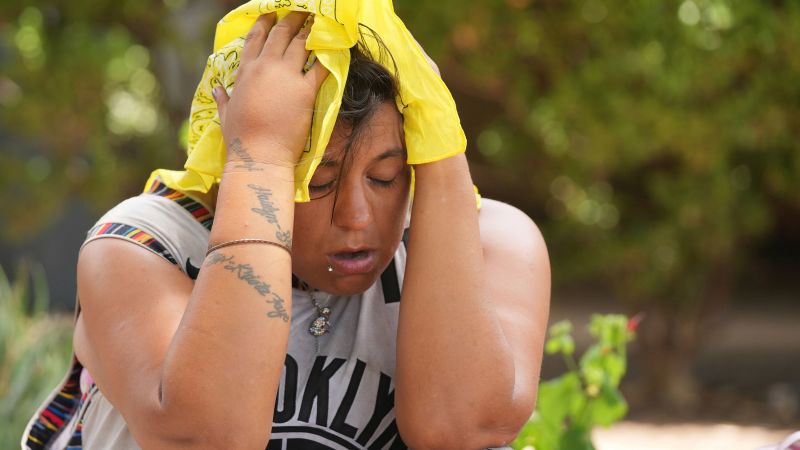An already dangerous weeks-long heat wave will only worsen this weekend as a heat dome intensifies and reaches peak strength over parts of the Western United States.
Around 100 million people are under heat alerts after the heat dome expanded into places like California, which is now experiencing its first extreme heat wave of the year. It’s already been dangerously hot for weeks in Texas, Florida and Arizona, where Phoenix is in the middle of a likely record-breaking streak of consecutive 110-degree days.
The heat will be so intense that forecasters suggested residents of Las Vegas avoid the outdoors between 9 a.m. and 6 p.m., with the city forecast to challenge its all-time high temperature of 117 degrees on Sunday. It won’t get much cooler at night, with low temperatures nearing 90 degrees – a particularly dangerous side-effect of the climate crisis.
This kind of extreme heat is one of the hallmarks of human-caused climate change, the symptoms of which are tallying up this year into a global record box score of sorts: “unprecedented” ocean heat off the coast of Florida and in the North Atlantic; record heat in Beijing, in what could be one of the hottest summers in China; record energy demand and heat in Texas; and an ongoing “Cerberus” heat wave that threatens to topple European temperature records.
It all adds up to what could be the hottest year on record.
A ‘perfect storm’ of deadly heat
These records also add up into something more serious for human health, doctors say.
These extreme temperatures could trigger heat illness in as little as 20 to 30 minutes for people doing anything strenuous outdoors, because heat acts as a “perfect storm” that overloads the body until it eventually short-circuits and then shuts down, Levy said. The timeframe would be even shorter for those most vulnerable to heat, like the elderly and those with pre-existing health conditions.
Heat illness is a serious concern this weekend for the millions of residents in major metro areas like Phoenix and Las Vegas.
People across the Southwest and California’s Central Valley are under a rare “extreme” level of heat risk on Saturday, Sunday and Monday, according to the weather service.
This “extreme HeatRisk” is the highest possible risk level for heat, akin to a “high risk” for tornadoes, and is meant to warn of significant heat impacts that require preparation.
These areas should prepare for spikes in heat-related ER visits, potential power outages from demand and temperatures high enough to turn deadly, especially for outdoor workers and those without reliable cooling.
Levy said that these workers can stay safe by taking frequent hydration breaks, wearing clothing that can reflect the sun and having a “buddy system” so that no one is left in the heat alone when illness strikes. For those who don’t have reliable cooling, he recommends finding a cooling center and having a plan to get there before the need arises.
Before this latest wave, heat has already killed at least 12 people in Phoenix’s Maricopa County this year, and killed 425 people last year. The city has opened “respite centers” to help provide relief and the state has asked residents to keep their vehicles stocked with water.
The heat won’t go away after this weekend, even if temperatures peak: Longer term temperature outlooks from the Climate Prediction Center point to above normal temperatures across Southern California, the Southwest, South and Florida through next week.






